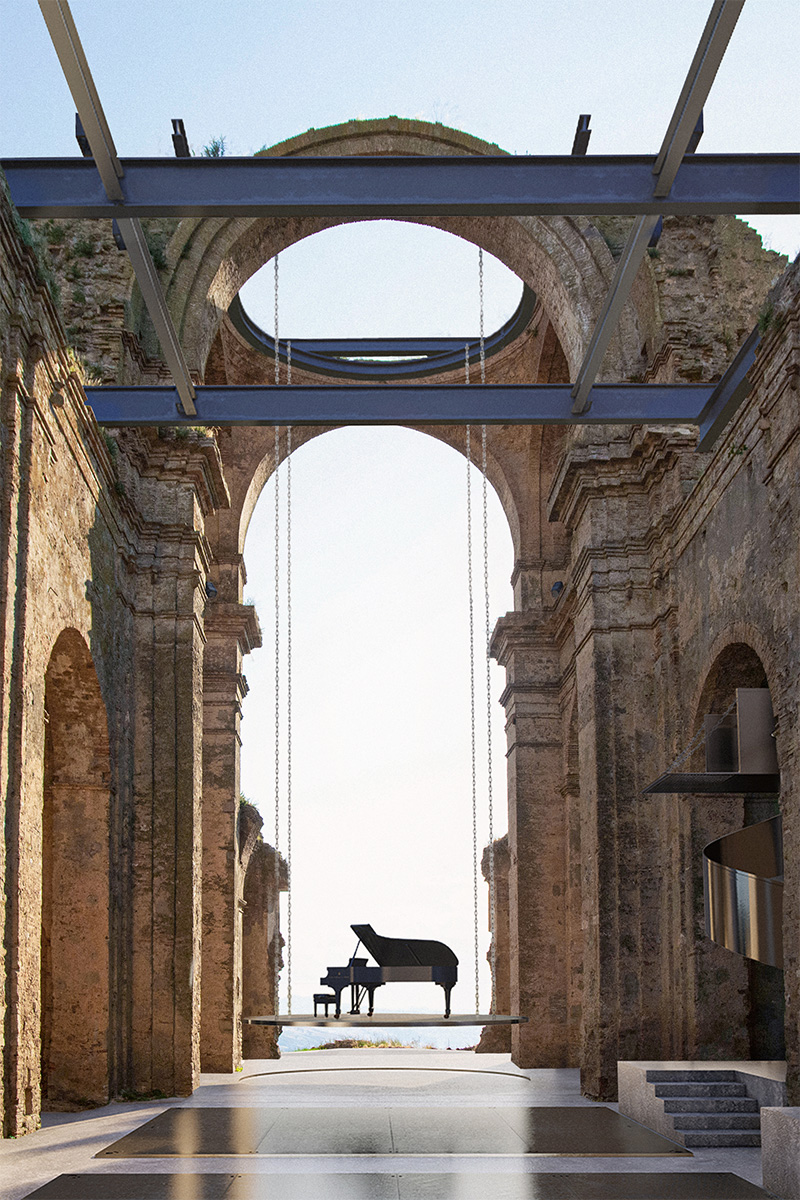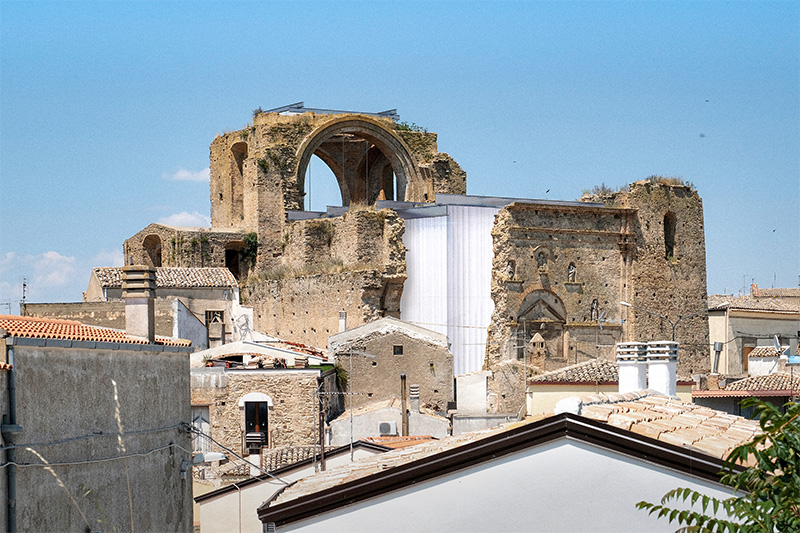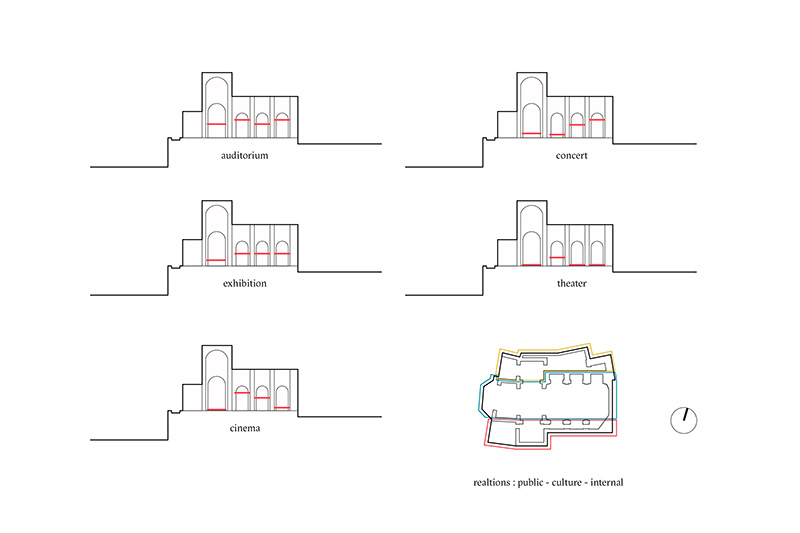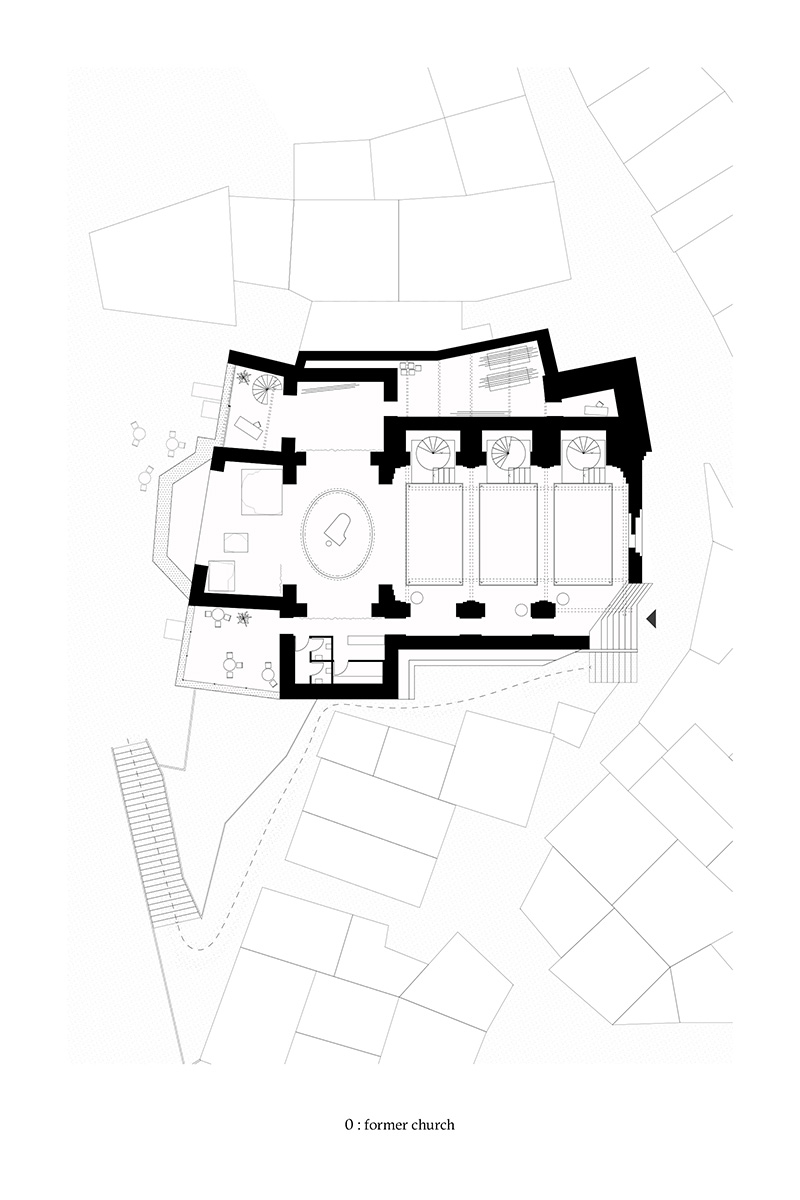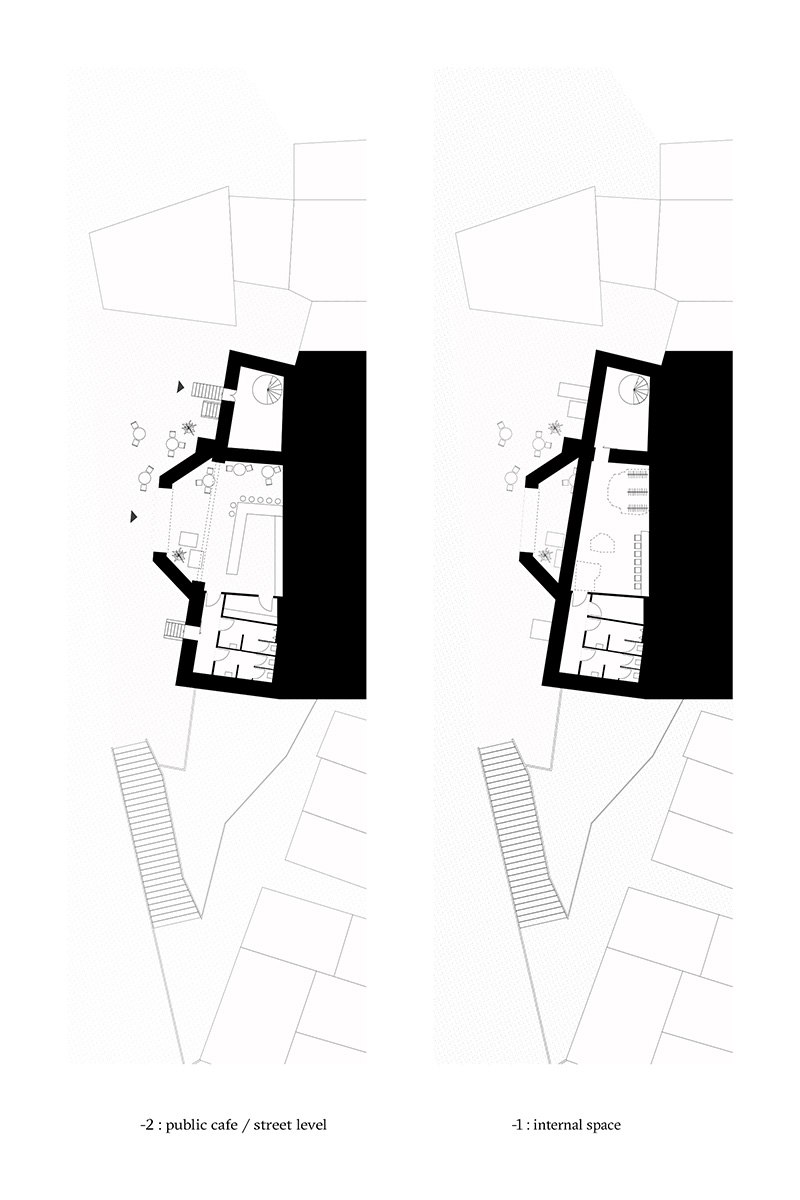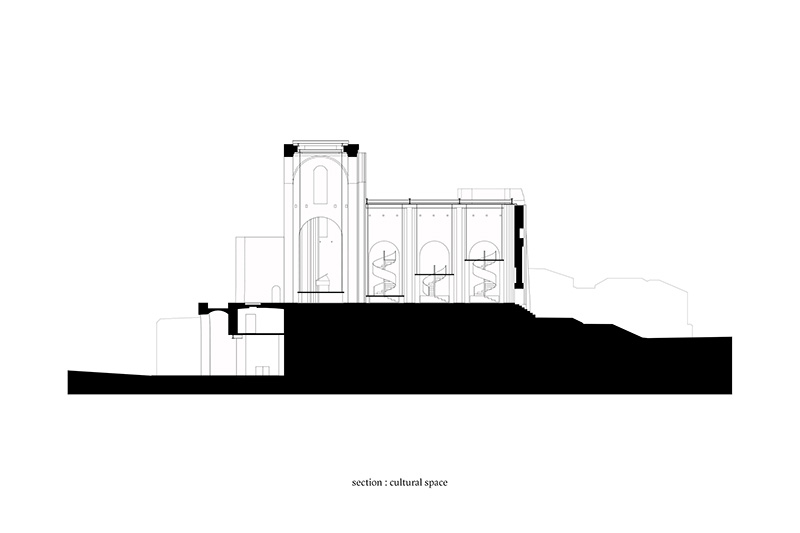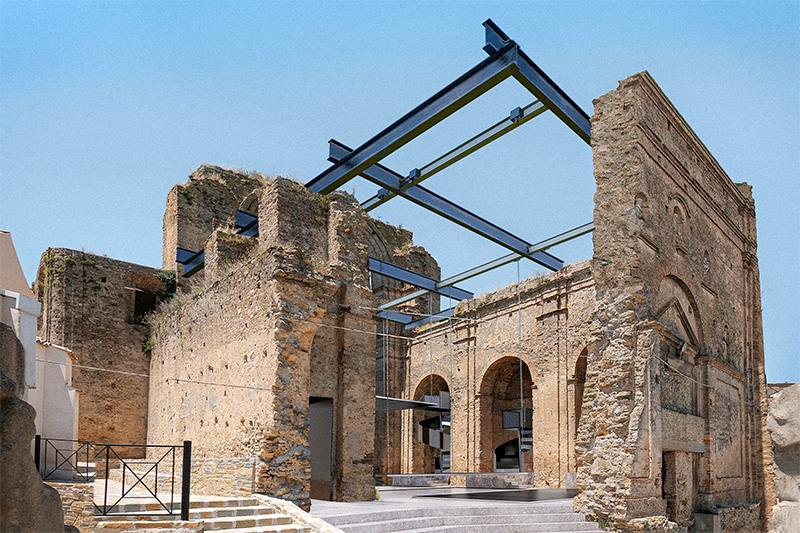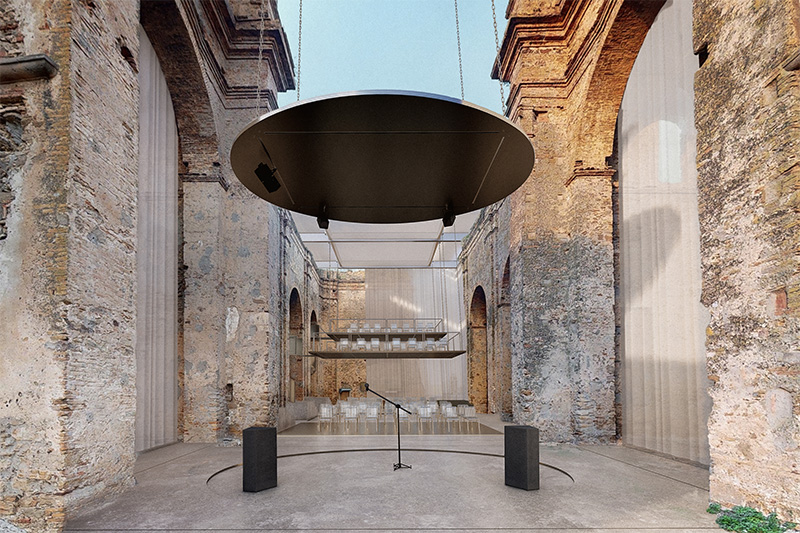On the southern edge of the Italian town of Grottole, a half-ruined Romanesque church stands somewhat elevated. It is very characteristic and formative for this place and stands out from the
surroundings because of its location. On the eastern side, it blends into the street space and the surrounding buildings. On the western side, however, the church interior opens into the expanse of
the landscape and provides a view of nature. This found spatial quality is the one approach of our design.
The intention is to create an open space that plays with the relationship to the landscape and allows it to become part of the architecture. We want to preserve, strengthen and reinterpret the character of the place. On the other hand, we want to activate the place as a low-threshold cultural space through few but strong interventions in the existing buildings. A constructive and typological infrastructure is created, which makes new potentials available for different creative artists. In this way, the reimagined place can become a cultural part of the city.
Through several architectural interventions in the existing substance, we expand the essential, form giving typological elements and give the building a new expression. This will be implemented by a steel structure forming the roof of the church, a new floor covering and four height-adjustable platforms suspended in the nave and crossing tower of the church. In their strong appearance, the steel girders create the connection between the new structure and the existing building. It is precisely through this massiveness that a filigree approach to the site can be created in this context. This open construction with suspended sails as weather protection and temporary thermal envelope creates a space that communicates with its surroundings. Two overlapping beams strengthen the spatial perception towards the main entrance and thus mark a new portal for the nave of the former church.
Here there are three rectangular platforms, which are defined by the size of the existing bays and whose spatial shape reflects the existing typological structure. With pull chains these can be adjusted to different positions vertically in the room. The addition of a modular guardrail above the platforms and the possibility of mounting technical equipment or acoustic elements below them creates a flexibility that allows for a wide variety of cultural performances. Creators of culture can take advantage of this variability and by simple interventions and additions adapt the place to their needs and imagination. The classical concert-theatre space can be made possible in this way, but is not a limitation for other unforeseen uses. New unconventional spaces can be interpreted and created under as well as above the slabs.
The two poles of artist and audience can be questioned and put into a new horizontal and vertical relation. The access to the suspended platforms takes place in the lower area via a socket, which allows a small scale differentiation in height. Spiral staircases standing on it, create further possibilities in the vertical. The independent design of the stairs on the base detaches them from the pure construction and blends in with the existing structure in a manner reminiscent of historical sculptural representations. Another platform is located in the crossing tower, which is elliptical in shape and is inspired by the opening in the roof. In this way, it is typologically different from the other levels and can establish a relationship to the landscape surrounding the site through the perspective visual axis.
This allows it to be spatially for example acting separately as a mainstage. Due to its associated shape with the other levels, however, it can also integrate seamlessly into other spatial constellations. Due to the structural recess in the west of the main nave, additional fall protection can be dispensed with here. The unique orientation and visual axis from the church interior into the valley and the surrounding landscape is thus not impaired by new constructive interventions. The architecture thus takes a back seat to the existing building.
The southern wing of the church is intended as a public area. Here is a newly created enfilade, which allows independent access to the nave from the main entrance. It constantly creates new lines of sight and connects the public spaces right up to the public terrace. The inserted cubes for sanitary facilities and catering take a back seat to the appearance of the existing building.In the northern part of the church are the internal functions. The old sacristy serves as a new backstage area, as well as storage and will be strengthened with a similar steel construction as the nave. A spiral staircase in the northwest corner leads to the rooms below.
The changing rooms and internal sanitary facilities are located here on a mezzanine floor. This room is lit through the existing ceiling openings. Through translucent glazing, these are integrated flush with the new floor structure. The actual artist’s entrance is discreetly located at the level of Viale della Resistenza. The adjacent urban space below the nave is to be activated by a bar/cafe. This means that the course can be used independently of events. At the same time, the infrastructure serves the catering of the bar in the upper main room. The gift shop and checkout are also located here. This creates a clear public address in the lower part of the existing church, which at the same time includes and expands the urban space.
In order to reach the main entrance on Via Giuseppe Garibaldi, we include the access via the existing southern staircase as a connection. By activating the public space in this way, we temporarily change its meaning and transform it into a “red carpet”. This openness of the design allows us to respond very carefully to the existing context.

